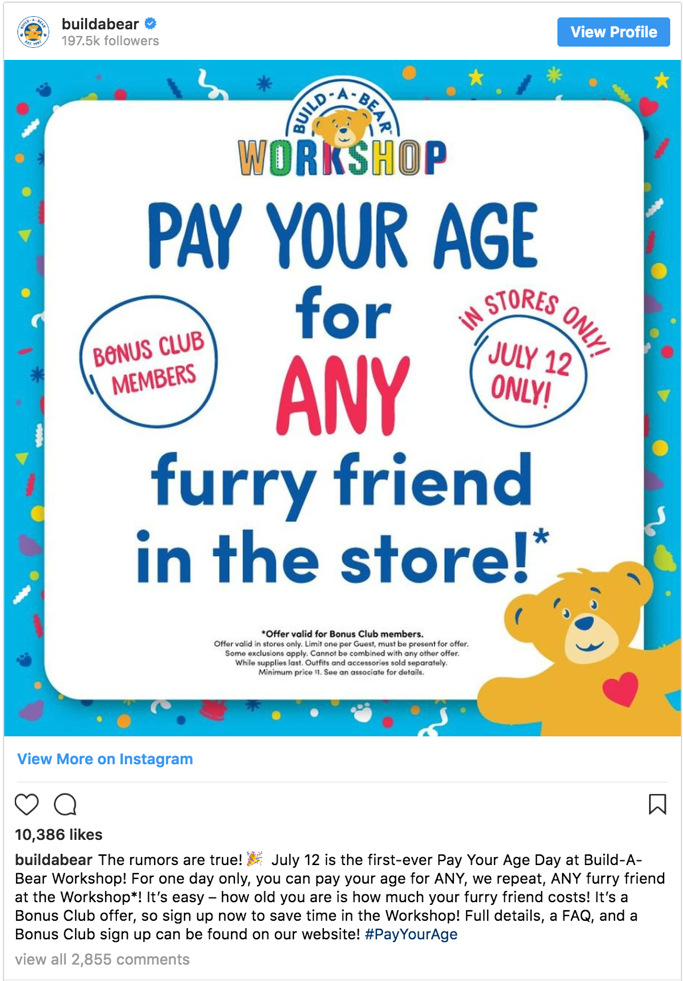Last Thursday, Build-A-Bear workshop announced that they would allow customers to “pay their age” for their products. For those not familiar, Build-A-Bear workshop sells customizable teddy bears and other stuffed animals for – after customizations – roughly $50-$60, so it’s no wonder that the “pay your age” event garnered a lot of interest. Around the country parents of young children salivated over the opportunity to get their youngsters a new stuffed pal at a steeply discounted price.
At this point, we all know it was a disaster. So many people showed up for the event, they had to shut it down only a few hours in.
Hindsight being 20/20, we now know that this was a terrible idea for a variety of obvious reasons:
- The promotion was announced only three days ahead of time, so there was limited time for everyone to prepare or gauge interest
- The Build-A-Bear product takes a pretty long time to make, so any sort of significant price promotion was likely to overwhelm store capacity
- They incentivized parents of the youngest children to come (the younger the child, the bigger the discount) – and as a parent of a young child I can tell you they aren’t great at waiting in line for a long time
- And of course – an unfulfilled promise of a new stuffed animal to a young child is a pretty serious problem for a parent.
But those issues aside, here’s what I found so compelling about this business gaffe:
The promotion was billed as “pay your age” – which successfully lodged in the minds of their customers that they would be able to get a fully customized furry companion for their three-year-old child for just $3.
However, that wasn’t actually the deal.
At the end of the ad there is a pretty big caveat hiding in the fine print: the “outfits and accessories are sold separately”. Well, as someone who has been to a Build-A-Bear workshop, I can tell you that the outfits and accessories are about three quarters of the total cost. If I remember correctly, the “base animals” cost around $15 while the customizations add up very quickly and represent the balance of the $50-$60 that you end up paying at the register.
Based on the ad, a parent of a three-year-old child may have perceived the discount to be 94% ($50 all the way down to $3) however, in actuality the discount (taken only off the base animal) would have only been $12 ($15 – $3 = $12) or 24% off the end price (assuming the end price is $50).
There’s a giant difference between a 94% discount and a 24% discount and that’s why, I believe, they had so many folks show up. If they had billed this as a “24% off” sale, I don’t think they would have had a problem.
After the failed promotion, Build-A-Bear announced they would issue $15 vouchers for families who came to the event and were turned away. I would not be surprised if there is backlash from their customers over the apology vouchers. Based on my math above, $15 off is actually a better deal than the “pay your age” deal, but I bet that some customers will still be expecting the 94% discount they thought they were going to get on Thursday.
An important lesson: when it comes to price, perception is often more powerful than reality.
